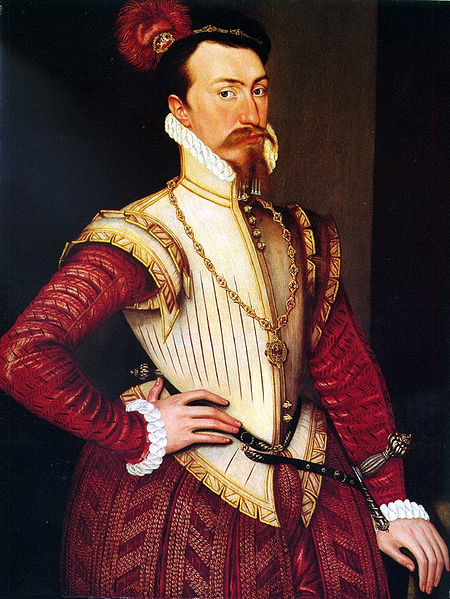The European buff coat is an item of leather clothing that was primarily worn by cavalry and officers during the 17th century, but also worn by a small number of infantry. It was often worn under iron or steel armour for the torso. The buff coat was derived from the simple leather jerkins employed by huntsmen and soldiers during the Tudor period, these in turn deriving from the arming doublet. The name of the jacket, as well as its characteristic tan or buff colour, derives from the buffalo or ox hide from which it was commonly made.
English buff coat 1630–1640 showing false fastening of silver tape down the front. Metropolitan Museum of Art
A Royalist cavalry officer of the English Civil War, wearing a buff coat under a cuirass. The buff coat has sleeves decorated with bands of gold lace. Portrait of Richard Neville, by William Dobson, 17th century
Sleeved buff coat once belonging to King Gustavus Adolphus of Sweden. A bullet-hole is visible in the lower right of the torso section (left to the viewer)
A jerkin is a man's short close-fitting jacket, made usually of light-coloured leather, and often without sleeves, worn over the doublet in the 16th and 17th centuries. The term is also applied to a similar sleeveless garment worn by the British Army in the 20th century. A buff jerkin is an oiled oxhide jerkin, as worn by soldiers.
Robert Dudley in a slashed, probably leather, jerkin of the 1560s
Sir Walter Raleigh wears his jerkin closed at the waist, 1602. His son wears a similar garment.
Dutch musician wears a jerkin with ribbon points as fasteners, 1632.
Guardsman's buff jerkin worn with a sash, c. 1639, from a painting by Frans Hals.







